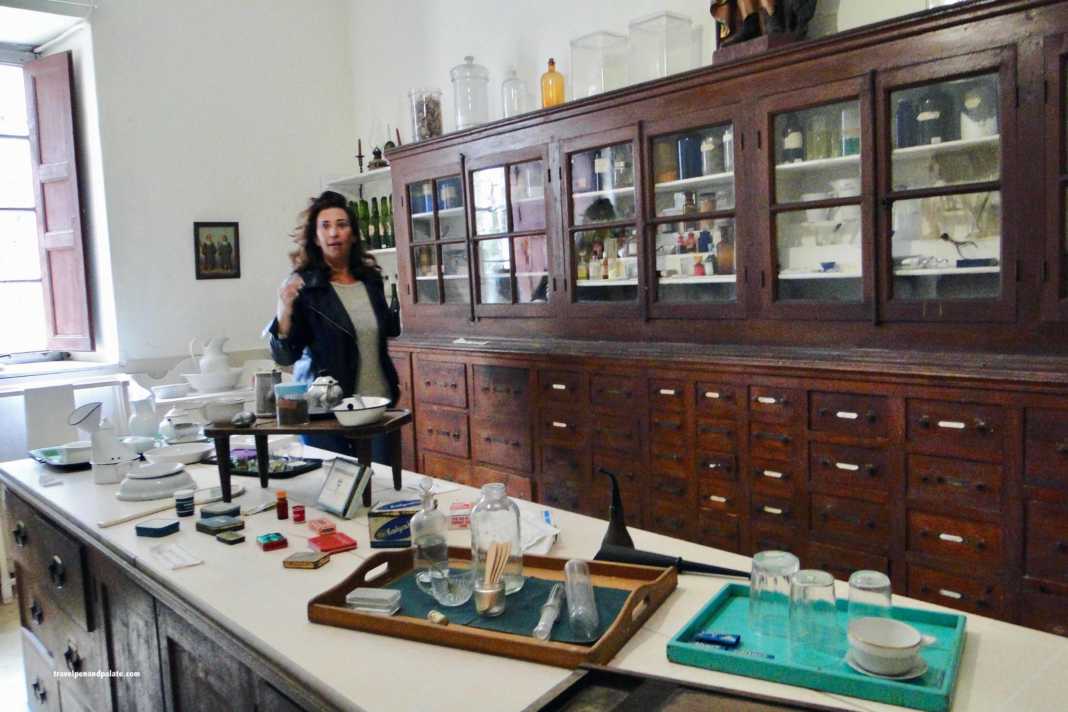Angela de Merici, founder of the Ursulines, believed that educated young women could make great contributions to society. The year was 1535.

In an age when schools for women were unheard of, Angela de Merici (1474–1540) was on a mission to educate an ignored class: orphaned girls and disadvantaged young women. Their studies covered the fine and practical arts from painting to mathematics. The Ursulines hoped this would launch these girls into careers and perhaps even advantageous marriages.
Angela de Merici held radical ideas for the 16th century believing that nuns should live among the people wearing normal clothing rather than a religious habit that would set them apart from those they served. Along with a couple dozen liked-minded women, de Merici created the Company of St. Ursula after the patron saint of education and dedicated themselves to the care of the sick and needy as well.
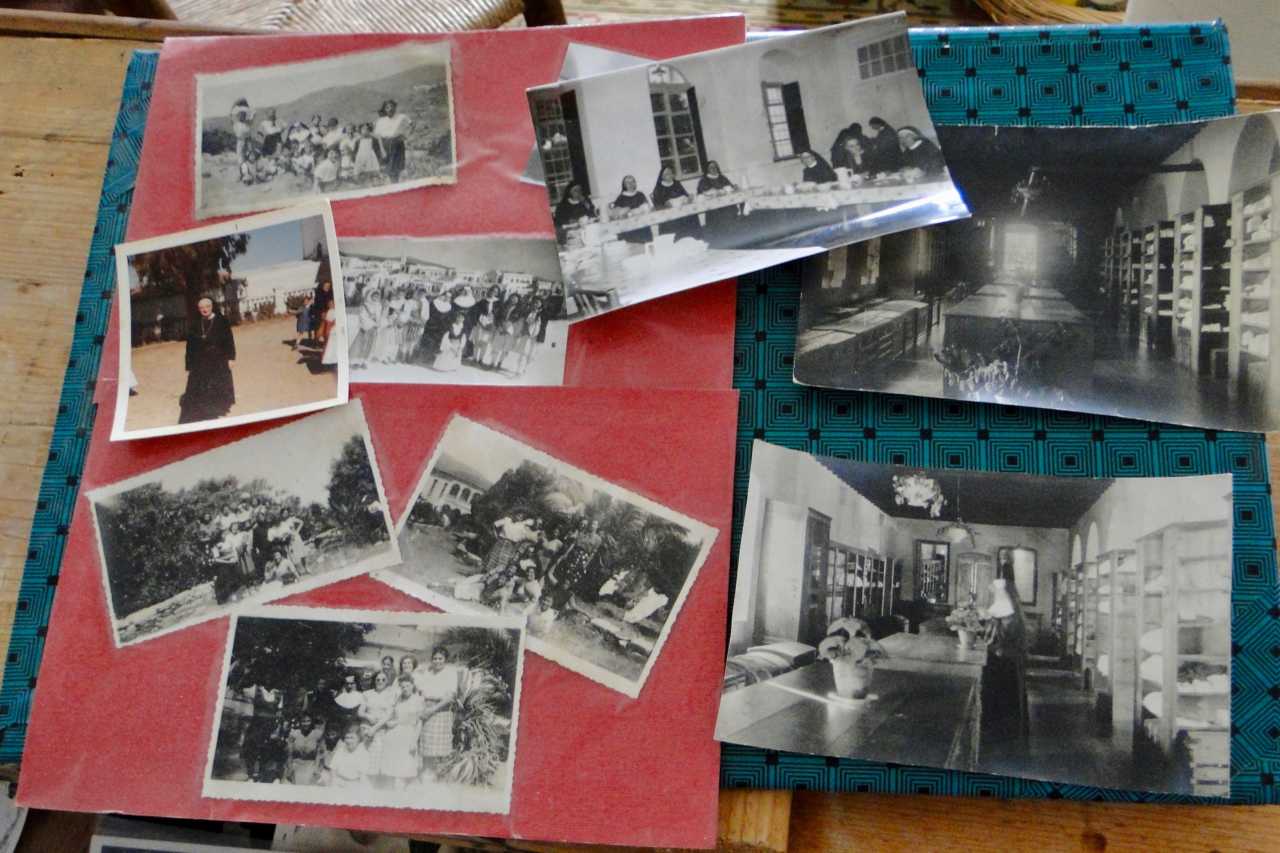
After de Merici death the Company of St. Ursula evolved into the Ursulines, a more traditionally organized society of cloistered nuns, but still dedicated to the education of disadvantaged girls within the walls of their monasteries. Despite that radical change from de Merici’s vision of the order, the Ursulines flourished over the next three centuries.
The Ursulines have had a long history In Greece. In 1628 on Naxos Island the Jesuit monastery hosted both a boy’s school and, in conjunction with the Ursulines, created the first school ever to exist in Greece for girls. Although the Jesuits were replaced in the late 18th century, the school – Ursulines School & Merchant Academy – continued to evolve. In 1931 it was renamed The Greek-French Ursuline School of Naxos and followed the curriculum of public schools.
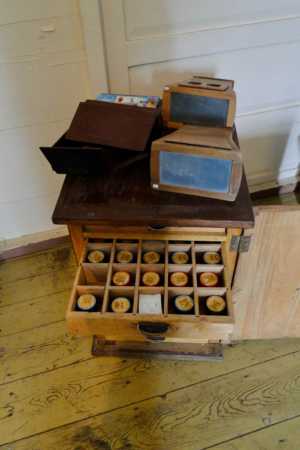
By the end of the 20th century it ceased operations as a public school. With an advantageous location within the Byzantine Kastro of Naxos Town the historic structures serve today as museums. During summer months the Greek-French Ursuline School of Naxos offers university level courses in language, Greek and European heritage and culture.
In the 1840s the Jesuits founded a monastery and boys school in the small picturesque village of Loutra – now the Folk Museum of the Monastery of Jesuits. The Ursulines were asked in 1862 to open a convent and girls school nearby. Continuing to educate orphans and the disadvantaged, they attracted as well the daughters of mothers who had moved away from home for economic reasons to Ottoman lands.
Both schools put Loutra on the educational map. The Ursulines fame for quality created a demand from wealthy families throughout Europe and the Middle East to send their daughters as well. By the eve of the Second World War 25% of the 400 female students from some of the most illustrious families were paying tuition and looked after by over 80 nuns. The income greatly aided the Ursulines mission.
Yet the Ursulines school was not a young women’s finishing academy but rather a comprehensive educational institution more akin to an academically oriented vocational secondary school. Nuns who were accomplished experts in their fields taught the young women. The curriculum included all standard academic subjects required of Greek schools plus such fields ranging from clothing design and painting to pharmacology.
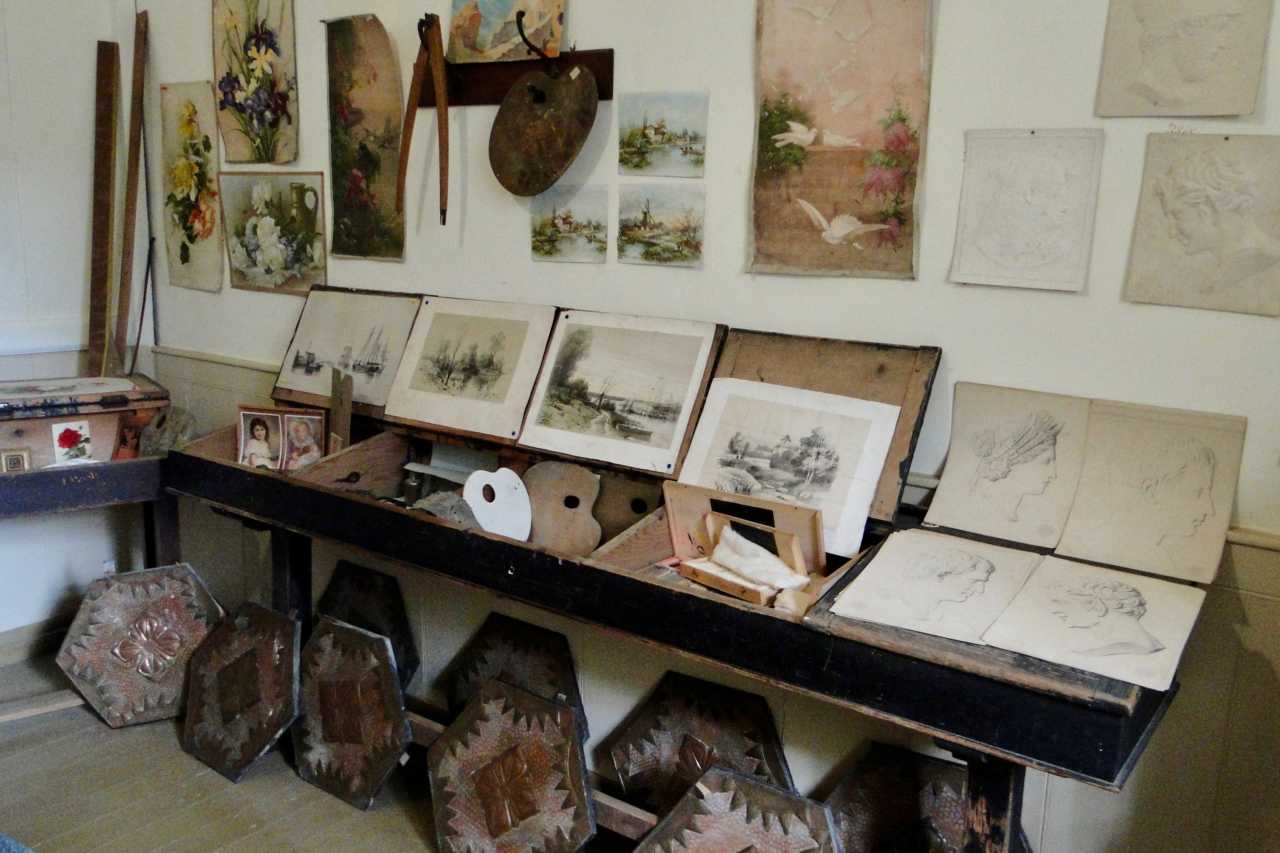
Unfortunately the outbreak of World War II had serious consequences. Starting in the pre-war years of 1937 – 1939 the number of tuition students and nuns from outside Greece started to dwindle. During the war and Nazi occupation of Greece the school remained open, but only for orphans and local children.
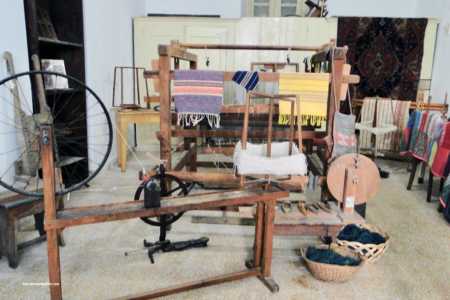
Post war the Ursulines school on Tinos continued as a local primary school until 1984, but training and commercial production in weaving and carpets continued until 1991. The main convent and school buildings, still owned by the order, serve today as the Museum of Ursulines Monastery detailing through exhaustive exhibits the life that once teemed in this complex. It’s a visual testament to Angela de Merici’s faith that young women would make great contributions to society.
The allure of marble
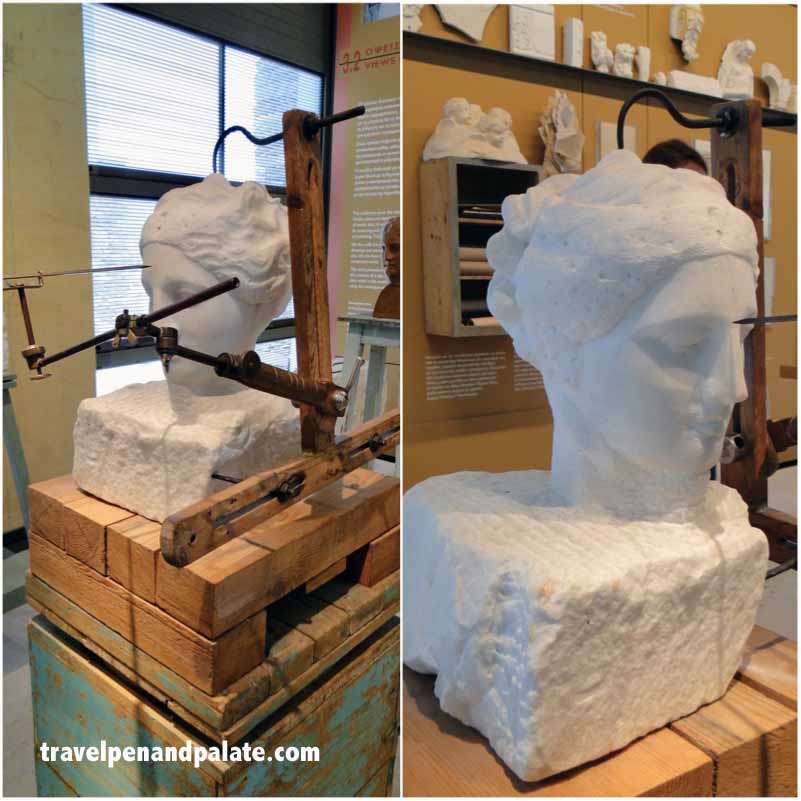
Feet glide silently across marble floors. Eyes gaze on cool polished stone gleaming in moonlight as if it’s flowing to the horizon into the sea. The allure of marble is timeless; the location is my home in Mexico.
It seems marble has always been the diamond of stone. It’s color variations from pure white to deep green have made it ideal for all from building material to jewelry. Marble and Greece have been intertwined for 5,000 years.
Greece’s great age of classical architecture and sculpture was from the 500s BCE through the end of the Roman era. Yet Tinos Island and many Greek marble regions continued to export this prized rock throughout the Byzantine and Ottoman eras into the 21st century. Now Tinos has become the magnet for all interested in the art of marble crafts.
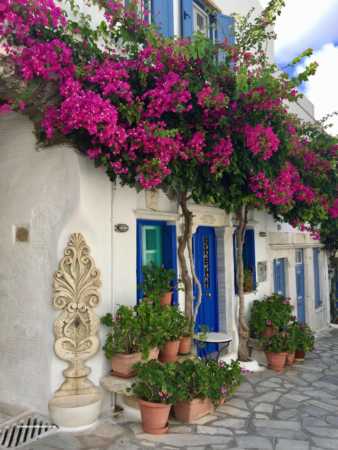
The sun gleamed off the white buildings of the village of Pyrgos. Greek island towns often sparkle in contrast to the deep blue of the sky, sea and bright sunlight. Yet descending into this already photogenic town set within verdant trees the reason for its brilliance becomes obvious. Pyrgos – pretty much the entire town – is constructed of marble: streets, fountains, tabletops, houses and even the bus kiosk!
The word marble comes from the ancient Greek term μάρμαρον meaning “crystalline rock, shining stone, to flash, sparkle and gleam.” Marble has an advantageous quality that, when first quarried, it is relatively soft and easy to work, refine, and polish. As the finished marble ages it becomes harder and more durable and is effectively weather-resistant.
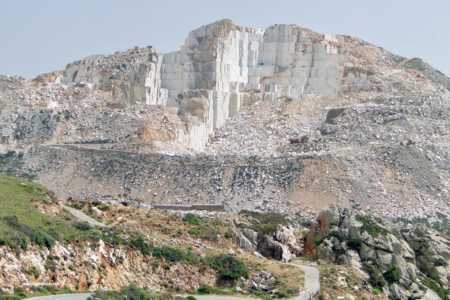
The Cyclades Islands have been and still are a major center for marble quarrying in Greece. Many of the great antiquities, from the Parthenon to exquisite, nearly life like statues, are made from Cyclades marble. Its durability as a building stone is legendary, and marble’s unique geologic qualities allow artists to even carve the rock to a translucent thinness.
Marble was formed through eons of time as limestone or dolomite was recrystallized by pressure and heat. Pure white marble is created through very pure limestone or dolomite. The veins of color that occur in other varieties are the result of mineral impurities such as clay, silt, sand and iron oxides that mixed with the limestone
Pyrgos is home to and has trained some of Greece’s finest artists in marble. The Dellatolas Marble Sculpture School educates students from beginners to professional artists who wish to hone their skills. During two and three week intensive workshops, May through October, students work daily with famed Greek sculptor Petros Dellatolas.
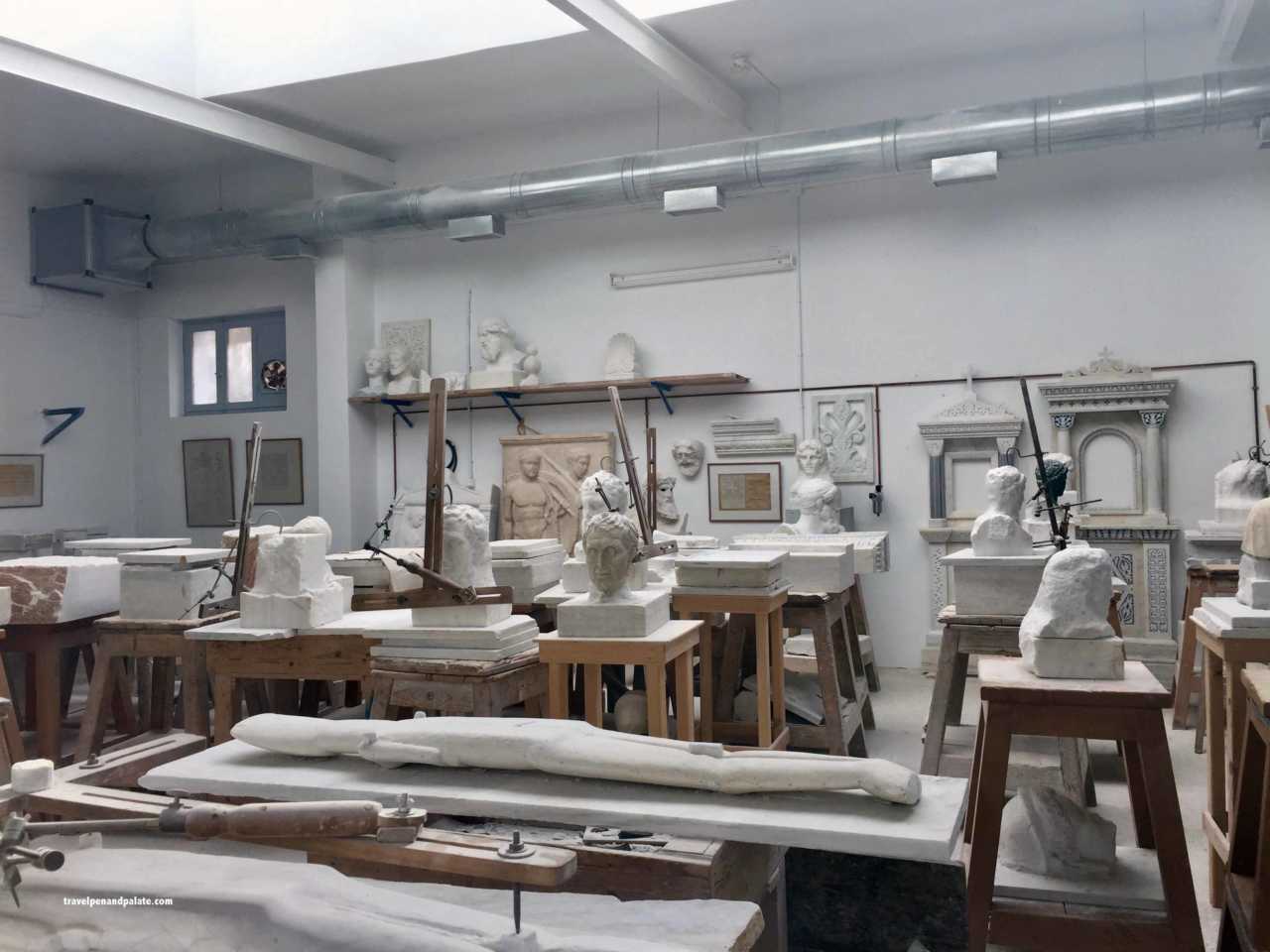
Dellatolas and colleagues made plans for a museum that would cover the rich history of this rock. With the generous support of the Piraeus Bank Group Cultural Foundation, the Museum of Marble Crafts in Pyrgos will tell and show you everything you ever wanted to know about marble from its geologic makeup, querying techniques and tools from ancient days to the present through an impressive array of objects and architectural artifacts.
The museum’s exhibitions explain the entire process of designing, cutting and carving down through the ages – long before the assistance of computers, power tools and lasers. The exterior of the museum building itself is not made of marble but rather the local tan/brown stone of the island so that it blends into the surrounding hillside on the edge of Pyrgos. This allows visitors to focus on exterior exhibits too large for the interior space and the sculpture garden of modern marble carvings.
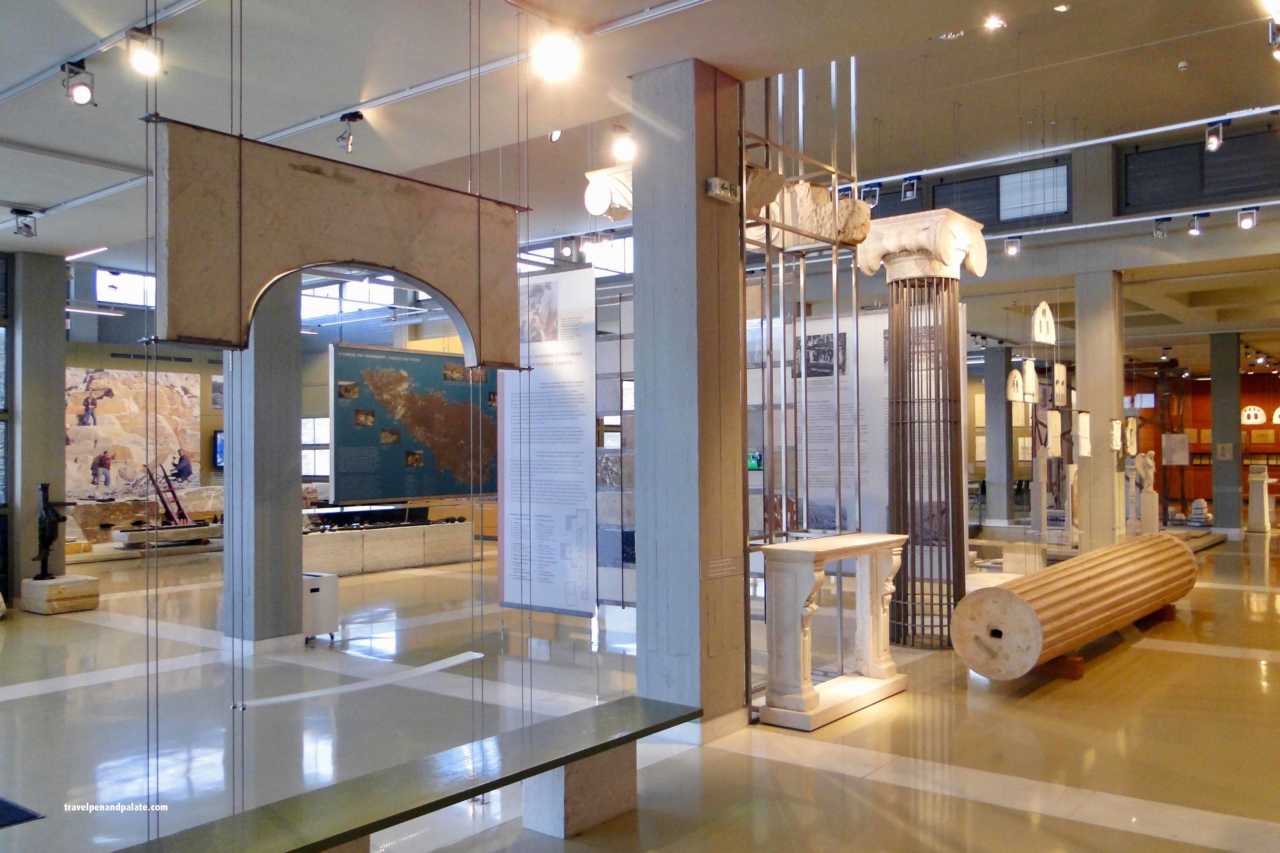
Once finished your tours, sit in a cafe on a Pyrgos square for a Greek coffee and galaktoboureko (semolina custard in filo). Gaze at all the marble glinting in the sun, the perfect foil for the town’s abundance of brightly colored bougainvillea. Ponder the positives of dedicated women and artists that still make significant contributions to Greek and Tinos Island heritage for the world to enjoy.

When you go: Tinos Island is easily reached by ferries from the nearby Athens ports of Piraeus and Rafina.
Disclosure: The author was a guest of the Museum of Ursulines Monastery, the Museum of Marble Crafts and the Municipality of Tinos Island. Special thanks to Adriana Flores Bórquez for being my guide. Transportation was provided by Dellatolas Rent a Car and accommodations by Hotel Meltemi. Arrangements were facilitated by the MTCgroup.
Travel with Pen and Palate every month to Greece and the world in the Hellenic News of America.

Travel with Pen and Palate every month to Greece and the world in the Hellenic News of America.


